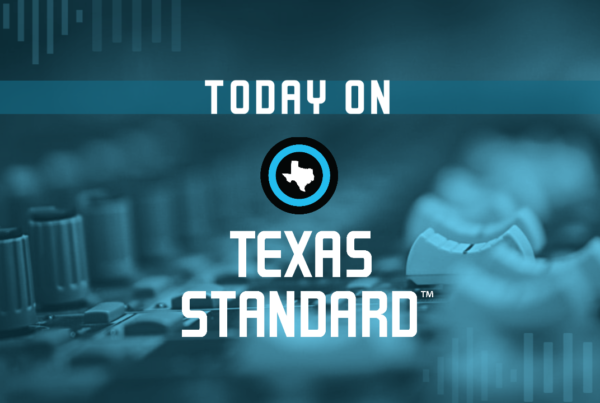About 5,000 Texans died of a drug overdose last year. But researchers say up to 70 percent of overdoses – most of which are nonfatal – go unreported in the state.
Researchers at the University of Texas hope to change that through a program called Texans Connecting Overdose Prevention Efforts, or TxCOPE. The idea is to track and prevent overdoses throughout the state.
Kasey Claborn, the lead researcher of the TxCOPE project and assistant professor at UT’s Dell Medical School and Steve Hicks School of Social Work, shares more about the project.
This transcript has been edited lightly for clarity:
Texas Standard: There isn’t an official way that national agencies track non-fatal overdoses. Could you tell us a little bit about what TxCOPE hopes to do and how it might fill the gap?
Kasey Claborn: Absolutely. TxCOPE is really the first digital platform here in the United States that our goal is to improve both fatal and non-fatal overdose tracking. The way we’re doing that is through deploying the digital platform across the state of Texas and hoping to gather data from the community.
So what we did is we partnered with people who use drugs; we partnered with harm reduction organizations across El Paso, across San Antonio and across Austin to build this digital platform that people can trust. People can feel comfortable reporting anonymously when a fatal or non-fatal overdose occurs in the community. The idea behind this is that we will have real-time data that will inform community response efforts across our counties and across the state.
With self-reporting, there’s always a question of ‘how reliable is the data?’ How do you deal with that?
Yeah, absolutely. So we have five required questions that people need to report. And we need that data in order to ensure data duplication and delete any duplicate data entries. And so this is a first step towards improving our data sources.
Our data is atrocious at the national level. The Office of National Drug Control Policy actually released last Friday a statement through the Journal of the American Medical Association highlighting our severity of data gaps across the United States nationally. Our goal is really to take a first step towards crowdsourcing some of the data for both fatal and non-fatal overdoses – especially non-fatal overdoses – so that then we can use higher-level machine learning, natural language processing techniques to then inform our actions. So data will drive action within our communities.
What are the obstacles in tracking overdoses? Why isn’t it officially tracked by federal agencies in the first place?
Nationally, they do track it; the CDC has a great tracking system. Traditional surveillance methods have used EMS data and emergency department data related to overdose, as well as medical examiner office data.
Here in Texas, we have pretty significant gaps within those data sources – and nationally, we do as well. But in Texas, out of the 254 counties, only 15 have medical examiners who complete death certificates. And so what that means is, if you don’t have a medical examiner doing the autopsy or evaluating the cause of death, then oftentimes the overdoses do not get recorded as a cause of death in counties that just have a justice of the peace. So here in Texas, we have a significant gap related to fatal overdoses.
You’re touching on something that may give people pause: Can you trust the system, especially if you’re a drug user, considering what some of the legal implications are? What is this data going to be used for?
You know, that was one of the things that we considered early on. We have a community advisory board of people who use drugs, a community advisory board with harm reduction organization leaders across the state. And that’s been the primary concern throughout the last two years of this project and the development of it. And so to address that, we have a certificate of confidentiality from the Substance Abuse and Mental Health Services Administration, which protects the data. If we were to get sued and have a request for the data, we do not have to turn that over.
And in addition to that, one of the primary ways that we’re hoping this will increase trust and increase confidence in the drug using community to report overdoses is, this is truly the only way that they can anonymously report an overdose that is safe and will give them a voice and give them power. So the idea is that we can use these data to promote policy change in Texas and really give a voice to our harm reductionists across the state and to our people who use drugs across the state so that it can influence the drug using community and help protect them and help protect their health as well.














